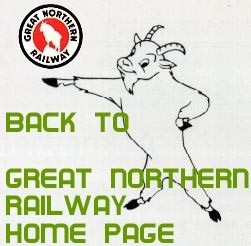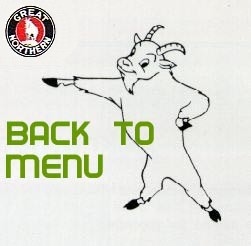|


| |
Special Instructions - Page 13

8.....The maximum permissible speeds between North Portal and South Portal for
all trains and engines are: 20 MPH moving with the current of traffic, and 10
MPH moving against the current of traffic.
9.....Operating directions are: "North" from south end of King Street
Station through South Portal to North Portal, and "South" from North
Portal through South Portal to south end of King Street Station.
10.....Dwarf signal of color light type, located between northward and southward
main tracks, south end of King Street Station governing northward train and
engine movements on southward main track (Tunnel track 4) is controlled from
South Portal Interlocking.
When Red is displayed, Great Northern Rule 601-A governs.
When Yellow is displayed, Great Northern Rule 601-E governs.
When a train or engine is stopped by the Stop-indication of this signal,
Signalman must be informed of desire to make the northward movement on southward
main track (Tunnel track 4) by four operations of the push button located on top
of the signal.
20.....Seattle, train, yard and engine movements between GN freight yard and 5th
Avenue tracks will be made via NP and UP main track Oregon Street connection and
their time-tables and Special Instructions will govern.
21.....SPEED TEST BOARDS.
Engineers shall test speed of their trains passing following points as compared
with Speed Table:
Westward, between MP 1779 and MP 1780 approximately 2 miles west of Snohomish.
Eastward, between MP 11 and MP 12 approximately 4 miles east of Ballard and
between MP 1779 and MP 1780 approximately 2 miles west of Snohomish.
22.....CROSSOVERS ON DOUBLE TRACK.
Facing Point.
MP 7.36 just east of Ballard, to Industrial district off of westward main track.
MP 28.5 front of depot Mukilteo.
Trailing Point.
MP 7.36 just east of Ballard.
MP 14.5, 1/4 mile west of Richmond Beach.
MP 15, Standard Oil Spur 3/4 mile east of Richmond Beach.
MP 17.92 just east of Edmonds.
MP 24.29 between Meadowdale and Mukilteo.
MP 29.21 at Mukilteo.
MP 31.33 GN oil spur, 1 mile west of Everett Jct.
23.....SPRING SWITCHES WITH FACING POINT LOCK.
Wenatchee Olds crossover (Connection to W-O Line) east and west crossover
switches.
Cashmere.....east and west siding switch.
Leavenworth.....east and west siding switch.
Winton.....east and west siding switch.
Merritt.....east and west siding switch.
Skykomish.....east and west siding switch.
Baring.....east and west siding switch.
Gold Bar.....east and west siding switch.
Monroe.....east and west siding switch.
Snohomish.....east and west siding switch.
Interbay.....yard lead switch near 23rd Avenue overhead bridge. Normal position
is for main track.
Interbay.....east end double track. Normal position is for eastward main track.
Interbay.....west end double track. Normal position is for westward main track.
24.....DRAGGING EQUIPMENT DETECTOR INDICATORS.
Westward,
On signal 1696.3 approximately 3 1/2 miles west of Merritt.
On cable post approximately 4 miles west of Baring.
On cable post just east of Index.
Eastward,
On cable post approximately 2 1/2 miles east of Index.
On signal 1742.0 approximately 2 miles west of Baring.
On cable post approximately 1 mile east of Berne.
On signal 1693.2 just west of Merritt.
25.....MANUAL INTERLOCKINGS.
Ballard, Br. 4.....Salmon Bay drawbridge.
North Portal-South Portal.....King Street tunnel and terminal tracks.
26.....MANUAL INTERLOCKINGS WITH DUAL CONTROL SWITCHES.
Scenic.....East and west siding switch.
Everett-Pacific Ave.....West siding switch.
Everett Jct......End of double track junction with 2nd Subdivision single track
between these stations.
Scenic, switches electrically controlled by operator at depot.
Eastward home signals at east switch equipped with Red Marker Disc and
"Positive Block" sign, Item 13 of this Subdivision governs in addition
to Interlocking Rules.
Home signal governing eastward movements on main track at east siding switch is
located to left of main track.
Home signal governing westward movements from siding to main track at west
siding switch is located to left of siding.
Everett, interlocking electrically controlled by operator at depot.
The Home Signal Limits (Rule 605) of this interlocking extend from westward home
signal for west siding switch at Pacific Ave. to Eastward home signals for end
of double track and junction switches Everett Jct.
Trains and engines receiving a proceed indication of home signal governing
entrance to these "Home Signal Limits" at either Pacific Ave. or
Everett Jct. may proceed, regardless of class, in accordance with Rule 605. A
Positive Block is maintained in both directions within the "Home Signal
Limits" and Rule 670 does not apply.
Trains and engines may make forward or backward movements within these home
signal limits without flag protection, observing all governing signal
indications. When stopped by a Stop-indication of the governing home signal at
entrance to home signal limits at either Pacific Ave. or Everett Jct., trains
and engines may proceed only when a change in the governing home signal
indication permits or when authorized by train order.
27.....AUTOMATIC INTERLOCKINGS.
Interbay.....NP Ry crossing.
28.....INSTRUCTIONS GOVERNING OPERATION OF TRAINS IN ELECTRIFIED TERRITORY.
Between Peshastin and 1 mile east of east switch, Leavenworth, between 1 mile
west of west switch, Leavenworth, and Winton tunnel, when, for any reason,
single trains in excess of 3500 tons with three General Electric engines coupled
on the head end are stopped on heavy grade specified above will double their
trains into either Leavenworth or Winton and will not attempt to start train on
Chumstick Line to avoid damage to equipment and excessive delays. When helper
engine is operated on freight trains, conductors must see that helper engine is
cut into train so that not more than rated tonnage of the helper engine will be
trailing. When train does not have full tonnage for all of the engines, tonnage
in the train must be prorated between the train engine and the helper engine.
When necessary to make a backup movement on ascending mountain grade sufficient
hand brakes must be set on rear end to hold up the slack; then when ready to
proceed ahead, hand brakes must be released starting from the rear car first and
working toward the head end of train so the slack will run out gradually and
avoid break-in-two.
 
 
|